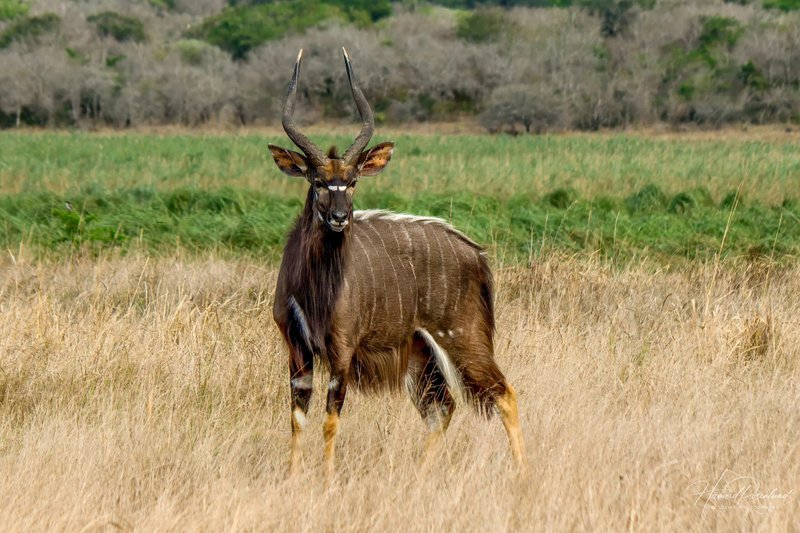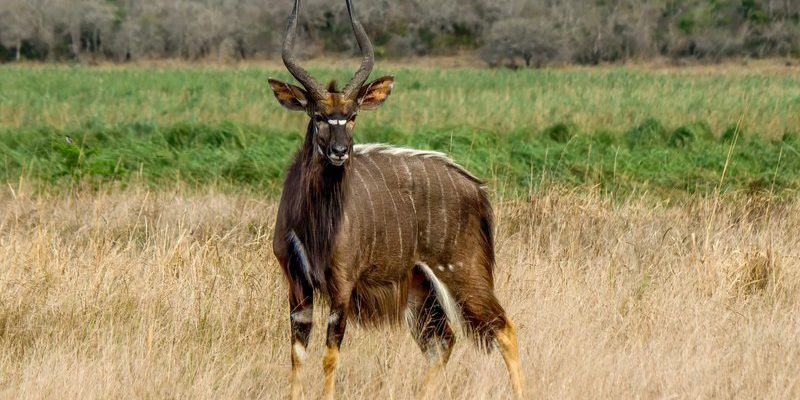
In different regions, the nyala represents various aspects—from the divine to the everyday. It’s fascinating how this one creature can embody so many meanings and stories, much like how a single song can evoke numerous memories and emotions. So, why does the nyala matter in cultural contexts? Let’s explore how this remarkable animal appears in folklore, art, and how it influences local traditions.
Physical Characteristics and Their Symbolism
The nyala’s appearance is striking, with males sporting long, twisted horns and a beautiful coat that transitions from chestnut brown to blue-gray. Females, on the other hand, boast a lighter, more uniform color with no horns. This contrast doesn’t just make for a pretty sight; it often symbolizes duality in various cultural narratives.
In many African cultures, the male’s horns are seen as a symbol of strength and authority. Just as kings are often depicted with crowns, the nyala’s impressive horns declare its status in the animal kingdom. When these animals are depicted in folklore, their physical traits often link them to themes of leadership and bravery.
Moreover, the nyala’s agile movements through dense brush symbolize grace under pressure. You might find stories where the nyala’s ability to evade predators reflects the human experience of navigating challenges in life. This connection deepens the appreciation of the animal, framing it as not just a creature of the wild but also as a metaphor for resilience.
The Nyala in Local Folktales
Throughout Southern Africa, the nyala appears in numerous folktales. In these stories, the nyala often embodies wisdom or cunning. A popular tale might feature a young hero who learns essential life lessons from observing the nyala’s behavior. This kind of storytelling shows how animals are often used as metaphors for human virtues and vices.
For example, one story tells how a clever nyala outsmarts a group of hunters by using its knowledge of the terrain. Here’s the thing: these tales teach lessons about survival and intelligence. They also highlight the interconnectedness of humans and wildlife, reminding us of our role in preserving nature.
Interestingly, the nyala is also sometimes depicted as a guide in dreams, embodying messages from the spirit world. This aspect shows how deeply rooted the nyala is in cultural beliefs, reinforcing its status as more than just an animal. It serves as a bridge between the natural and spiritual realms, enhancing its cultural significance.
Artistic Representations of the Nyala
The nyala doesn’t just stay tethered to stories; it leaps into the realm of art as well. In various communities, you’ll find traditional crafts and art featuring this elegant antelope. From carvings to paintings, the nyala’s beauty inspires many artists, expressing the intricate relationship between nature and creativity.
In many pieces, the nyala is depicted amid lush landscapes, celebrating not just the animal but its habitat as well. This artistic representation serves a dual purpose: showcasing the nyala’s beauty while also raising awareness about conservation needs. When people see beautiful art pieces of the nyala, they’re often reminded of its fragility in the wild.
Additionally, the use of the nyala in contemporary art can reflect modern themes such as environmentalism and sustainability. Artists may leverage the creature to comment on ecological issues, making the nyala a symbol of changing narratives in how we view wildlife today.
Nyala and Spiritual Symbolism
In various cultures, the nyala holds a spiritual significance that transcends mere physical presence. It often symbolizes growth, connection, and transformation. Many tribes view the nyala as a messenger from the ancestors, offering guidance and support during life’s journeys.
For instance, during rituals, some communities might invoke the spirit of the nyala to bless a harvest or ensure safe passage for travelers. This belief links the antelope not just to the physical world but also to the spiritual plane, showcasing how animals can hold profound meaning beyond their biological existence.
Moreover, the graceful movement of the nyala is often interpreted as a reminder for humans to navigate life with poise and balance. You might hear stories that encourage individuals to embody the qualities of the nyala: adapting fluidly to challenges and maintaining a sense of peace amid chaos.
The Nyala in Modern Culture
As times change, the nyala continues to exist in modern culture. You’ll find it represented in wildlife documentaries, eco-tourism promotions, and even in social media content. This modern visibility helps to bridge traditional beliefs with contemporary values, showcasing how ancient symbols can resonate today.
In eco-tourism, the nyala becomes a significant attraction, drawing wildlife enthusiasts and photographers. This interest not only celebrates the animal but also supports local economies and conservation efforts, ensuring that the nyala and its habitat are preserved for future generations.
Furthermore, in the realm of fashion and design, nyala motifs may appear in various collections, representing elegance and grace. This incorporation into modern aesthetics shows a blend of tradition with current trends, creating a space where the past and present coexist beautifully.
Conservation Efforts and Cultural Awareness
With the beauty and significance of the nyala comes the responsibility of conservation. Sadly, habitat loss and poaching have threatened the populations of these majestic animals. Here’s the thing: as we learn about the nyala in culture and folklore, it’s crucial to pair that knowledge with action.
Many local communities are becoming advocates for the nyala, using its cultural importance to promote conservation efforts. This connection between culture and wildlife is essential, as it fosters a sense of pride and responsibility among local populations.
Initiatives that focus on sustainable practices and eco-tourism not only protect the nyala but also celebrate its place in culture. By educating visitors about the nyala’s significance, we can help cultivate a broader understanding of the need for conservation.
The nyala is more than just an antelope; it’s a rich tapestry of culture, storytelling, and meaning. Its representation in folklore, art, and spiritual beliefs showcases the deep connection between humans and the natural world. By appreciating the nyala, we tap into a broader understanding of our place in the ecosystem and our responsibility towards wildlife conservation.
As we continue to tell stories and create art inspired by this beautiful creature, we also carry with us the lessons of resilience, grace, and interconnectedness. The nyala reminds us that every element of nature has a story and a role, urging us to listen, learn, and engage with the world around us. So, the next time you hear about the nyala, remember: it’s not just an animal; it’s a symbol of life’s intricate dance.

